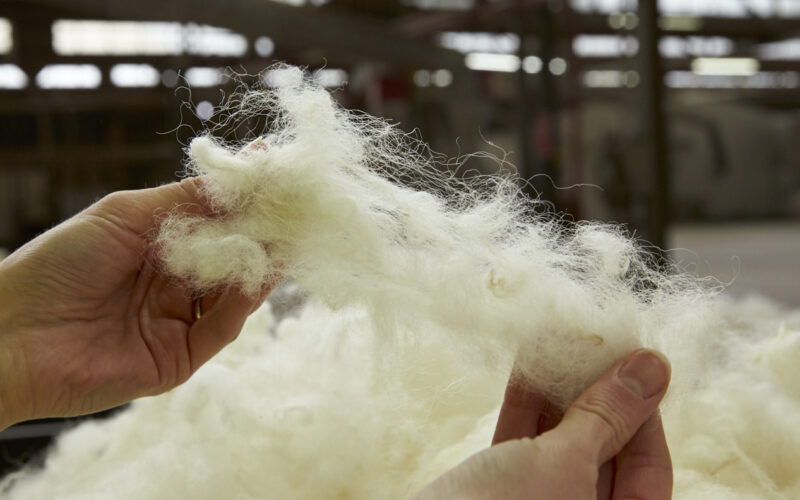The time is right to solve problems with wool, but simply relying on its reputation of being good for the environment is not enough anymore.
This is according to Wool Impact chief executive Andy Caughey, who said growers of strong wool have had little connection with brands and end-user demands – and that needs to change.
“We want to make sure we bridge this gap to build demand and equip farmers with the market intel to better prepare wool to meet these needs, which in turn will add value on farm,” Caughey said.
Caughey and Wool Impact marketing executive Gretchen Foster have recently returned from travels through Europe, the United Kingdom and the US, carrying the message that wool provides an elegant solution in current and future markets.
“We traversed carpet brands, fabric manufacturers, a non-woven innovation centre, material circularity programmes and experts, life cycle assessment discussions, interior architects, carpet distributors and retail,” Caughey said.
“These discussions and the many conversations with local wool brands and value chain participants have reinforced that the world needs natural fibre more than ever and we are well positioned to partner with brands that value and can carry that message.”
Key insights from the market include reputation reinforcement.
“The UK is the second biggest market for New Zealand strong wool to be used in carpets and it was good to see first-hand that wool still holds a strong place in brand and retail portfolios,” Caughey said,
NZ strong wools are already respected for their consistency, colour, strength, freedom from vegetable matter and contamination, and quality for scouring.
“Wool Impact will continue to reinforce these important points of differentiation with international brands so that NZ continues to lead the world in wool quality and be rewarded for it.”
Relying on wool’s natural status and legacy of being good for the environment is not enough, he said.
“The sophistication with which the world has embraced the sustainability movement has meant that natural is not necessarily good enough – environmental contributions and impacts need to be proven, and natural fibre systems are not always reflected well in environmental metrics.”
The growing trend towards a “buy less buy better” movement and the increasing awareness of micro-plastics and circularity – where renewable resources of enduring quality, like wool, are valued – will support growth and new opportunities for positioning NZ wool.

Caughey said Wool Impact is turning its attention to projects that validate wool’s longevity in use and its human and environmental health benefits over the lifetime of wool products.
A shift in the value mindset is needed, with the global wool eco-system currently hardwired for commodity transactions, which in the face of insufficient demand results in unsustainable prices for growers.
Wool Impact is acutely aware of the need to increase demand and catalyse a wool eco-system that incentivises the continued production of quality wool and secures continuity of supply.
“In creating new demand, we need to understand where we can have the greatest influence,” Caughey said.
“Consumers won’t always make the right decision; brand leadership is required.
“As brands and businesses such as interior architecture firms set and move towards environmental, social and governance goals, they will decide which fibres reach consumers.”
These influences are a key focus for Wool Impact’s market development activity, Caughey said.
International brands are preparing for a new era in designing products and conducting business, and a key component of this is sustainability, including the environmental impact of making a product, the ethics of production and circularity – what happens to a product at the end of its life.
“While advanced in the apparel sector, traceability and assurance is still a concept most strong-wool manufacturing brands are still toying with.”
Wool Impact is working with the NZ Farm Assurance Programme (NZFAP) to develop tools to help manufacturers that choose to buy wool from NZFAP-accredited farms tell their story of traceability and assurance. The tools will be available early this year.
“It is the first international standard of its kind for wool and presents an opportunity – when presented alongside the quality of wool produced in NZ – to set local growers apart.”
Meanwhile Wool Impact is scoping how a NZ wool innovation hub might look and operate, to open new channels to the market.










